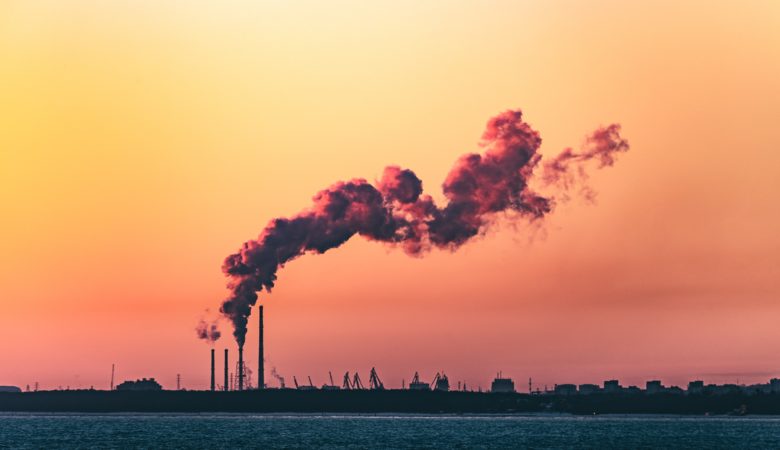Breaking Down Greenhouse Emissions: Where Do They Come From?

There’s no doubt that the earth is experiencing climate change at an unprecedented rate. This is due in large part to the greenhouse effect, and greenhouse gas emissions. The “greenhouse effect” refers to the way that greenhouse gases in Earth’s atmosphere trap heat. Prior to the 20th century, this was a good thing: the gases helped regulate temperatures to sustain life. Unfortunately, excessive greenhouse gas emissions contribute to global warming.
Understanding the source of greenhouse gas emissions allows us to make necessary changes to reduce them.
What are greenhouse gas emissions?
According to the Natural Resources Defense Council (NRDC), greenhouse gases “include carbon dioxide, methane, nitrous oxide, and water vapor (which all occur naturally), and fluorinated gases (which are synthetic).” These gases all have different chemical properties. Over time, they’re removed from the atmosphere by certain processes. For instance, carbon dioxide “is absorbed by so-called carbon sinks such as plants, soil, and the ocean. Fluorinated gases are destroyed only by sunlight in the far upper atmosphere.”
The more emissions we create, the longer it takes to remove them from the atmosphere—and the more heat they’ll trap in the meantime.
Greenhouse gases have been on the rise since the Industrial Revolution, and have exponentially increased within the last 40 years. “[B]etween 1750 and 2011, atmospheric concentrations of carbon dioxide increased by 40 percent, methane by 150 percent, and nitrous oxide by 20 percent. In the late 1920s, we started adding man-made fluorinated gases like chlorofluorocarbons, or CFCs, to the mix.”
There are five main greenhouse gases that contribute to global warming:
- Carbon dioxide: Carbon dioxide makes up 76 percent of global greenhouse gas emissions. It can linger for a long time, too: once the gas is released into the atmosphere, 40 percent will still be around in 100 years. 10 percent will remain 10,000 years later.
- Methane: Methane’s global warming impact is 25 times greater than carbon dioxide, and makes up about 16 percent of global emissions. It lingers about a decade.
- Nitrous oxide: This gas is 300 times more impactful than carbon dioxide, and lingers for about a century. Nitrous oxide makes up six percent of global emissions.
- Fluorinated gases: These synthetic gases come from manufacturing and industrial practices. They are thousands to tens of thousands of times more impactful than carbon dioxide, and can linger for tens of thousands of years. While they only make up about two percent of global emissions, their long-term impact is far greater.
- Water vapor: Finally, water vapor can also trap heat in the atmosphere. While water vapor isn’t linked to human activity, its increase is linked to other greenhouse gas emissions.
Greenhouse gas sources
According to the Environmental Protection Agency, which tracks greenhouse gas emissions in the United States, our primary emission sources are:
- Transportation: 29 percent of our greenhouse gas emissions in 2019 came from transportation. Burning fossil fuels to power vehicles, planes, ships and trains accounts for nearly a third of our emissions. You can see why environmentally conscious leaders are pushing for more electric vehicles on the road.
- Electricity production: Of course, electricity also creates emissions. 25 percent of America’s emissions result from producing electricity by burning fossil fuels, such as coal and natural gas. While solar power, hydroelectricity and other sustainable options are available, fossil fuels account for 62 percent of our electricity production.
- Industry: Another 23 percent of our emissions come from industrial production, including chemical reactions and burning fossil fuels for energy.
- Commercial and residential: Commercial and residential emissions make up about 13 percent of our total emissions. They usually arise from burning fossil fuels for heat, how we handle waste and products which contain greenhouse gases.
- Agriculture: Livestock, rice production and agricultural soils also produce greenhouse gases. These account for 10 percent of our 2019 emissions.
- Land use and forestry: Land use and forestry make up 12 percent of our emissions. However, land can actually absorb carbon dioxide from the atmosphere—and since 1990, managed forests and lands absorb more carbon dioxide than they emit. Finally, some good news!
As you can see, we have our work cut out for us. Use these sources as a guideline: where can you help cut back on your consumption? Whether that’s installing solar panels, taking public transportation to work or cutting down on your meat consumption, every little bit counts.
While this is a nationwide and global problem to solve, anything we can do helps—including spreading the word.

